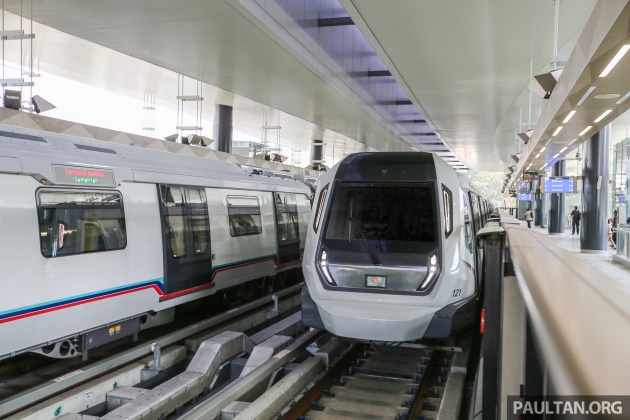Ridership on the Mass Rapid Transit (MRT) system is averaging around 140,000 passengers a day, but the rail project is still some way away from any profitability. According to deputy finance minister Datuk Othman Aziz, it will need to meet a target of 250,000 passengers on a daily basis to break even, Bernama reports.
However, he explained that the MRT was envisioned as a long-term project and was not viewed as something that would generate a return of investment in a short timeframe. He added that the overall cost to develop the three MRT lines will be around RM100 billion.
“So far, we are recording between 130,000 and 140,000 passengers a day. We expect to achieve our break-even point when the MRT, as well as its related housing and commercial projects are completed,” he said.
“Right now, there are six stations which have yet to be fully completed and utilised, namely the Kwasa Damansara, Kwasa Sentral, Kampung Selamat, Sungai Buloh, TRX and Merdeka 118 stations,” he told the Dewan Rakyat in response to a query regarding the project’s income and profitability.
The 51 km-long Sungai Buloh-Kajang line of the MRT network began operations in December 2016 with the opening of phase one, with the line being fully open in July with the launch of phase two. Last August, it was reported that the MRT SBK line had ferried around 7.4 million passengers since it began operating.
Looking to sell your car? Sell it with Carro.



AI-generated Summary ✨
Comments on the MRT breakeven point highlight concerns over affordability, with many suggesting fares are too high for lower-income commuters and advocating for lower ticket prices and better feeder bus services to boost ridership. Some note that current ridership is low, making the project financially unsustainable without subsidies, and question the accuracy of the 250,000 passenger target, emphasizing the need for detailed data and proper planning. There are calls for more integrated developments around stations and better parking facilities to encourage public transport usage. Critics view the project as poorly managed and costly, while supporters acknowledge the potential benefits of reduced traffic and long-term urban development, urging patience and continued investment. Overall, sentiments range from skeptical to hopeful, mainly focusing on making the system more accessible and efficient.